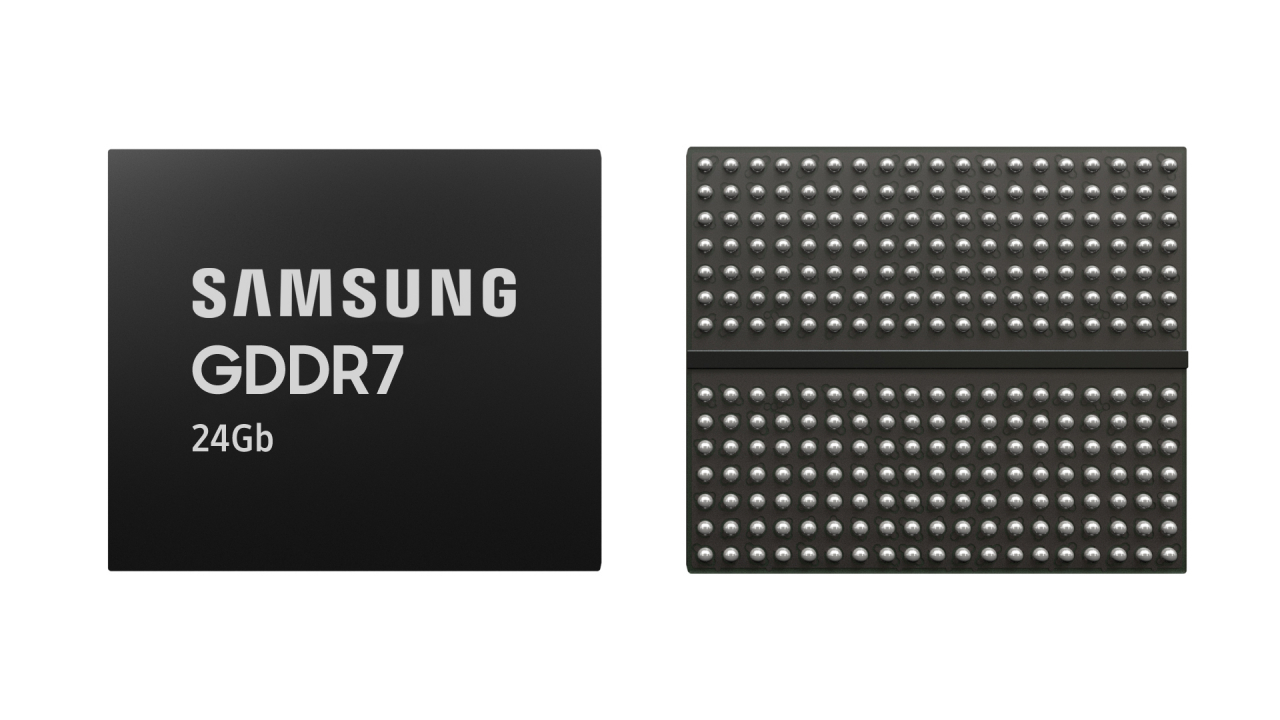
 > Business > Technology
> Business > Technology
 |
| Samsung Electronics' 24-gigabit GDDR7 DRAM (Samsung Electronics) |
Samsung Electronics, the world's largest memory chip maker, said Thursday it has developed the industry’s first 24-gigabit GDDR7 DRAM, set for a market debut early next year.
Compared to the previous 16Gb GDDR7 DRAM, the new chip has improved capacity, performance and power efficiency, the company said.
Samsung applied 12 nanometer-class processing technology to increase cell density within the same package size, achieving a 50 percent increase in capacity compared to the predecessor.
In addition to the advanced process node, three-level pulse amplitude modulation signaling has been used to help achieve the industry-leading speed for graphics DRAM of 40 gigabits per second, a 25 percent improvement over the previous version. The company said the GDDR7’s performance can be further enhanced up to 42.5Gbps, depending on the usage environment.
Samsung has introduced technologies used in mobile products, where low-power consumption is critical, to improve power efficiency by over 30 percent. The product's operational stability has also been enhanced by applying a power gating design method that minimizes leakage current during high-speed operations.
The company plans to start testing the new chip for advanced artificial intelligence computing by the end of this year to be supplied to clients early next year.
Following the development of the industry's first GDDR7 DRAM in July last year, Samsung aims to strengthen its influence in the graphics DRAM market with this new product, which boasts the highest capacity and speed in the industry.
“After developing the industry’s first 16Gb GDDR7 last year, Samsung has reinforced its technological leadership in the graphics DRAM market with this latest achievement,” said Bae Yong-cheol, executive vice president of memory product planning at Samsung Electronics. “We will continue to lead the graphics DRAM market by bringing next-generation products that align with the growing needs of the AI market.”
According to market research firm Dataintelo, the global GDDR market size is expected to grow from $5.8 billion in 2023 to $12.6 billion by 2032, with an average annual growth rate of 9.1 percent. Key growth factors include advancements in gaming technology, AI and the expansion of data centers.
Taiwanese market research firm TrendForce also reported that GDDR7 production is expanding as new GPUs enter the verification stage.
GDDR is expected to find even more applications in AI due to its fast speed and high power efficiency at a relatively low cost. High-bandwidth memory is typically used for high-performance AI chips that require data training, while GDDR is used for AI chips designed for data inference.
In July, Tenstorrent introduced the Wormhole accelerator, which features GDDR6, emphasizing that GDDR integration provides both cost efficiency and performance.








